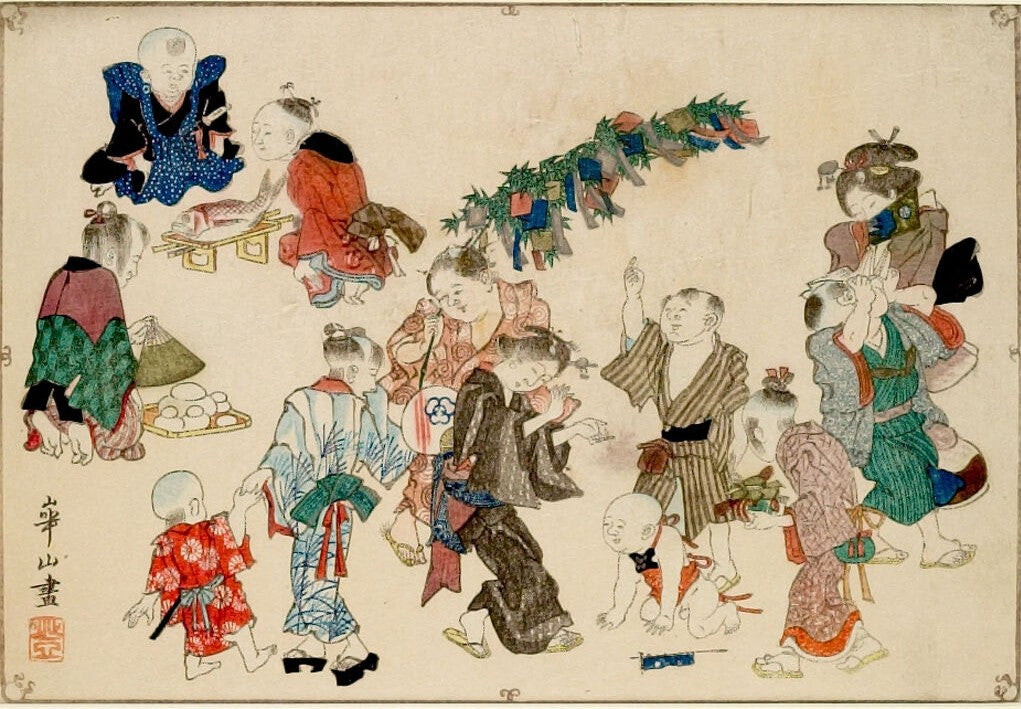Look up in the southern sky on July 7, several hours before and after midnight.
You can see a faint Milky Way, visible in the dark spot in the Northern hemisphere. In olden times, when the pollution and humidity were low, I presume spotting the Milky Way was easy. There is a drama up there.
A star, Vega (Orihime), and a star, Altair (Hikoboshi), meet once a year in the Milky Way.
A mythological story that originated in China describes that Orihime, a weaver and a daughter of the King of the Heavens, fell in love with Hikoboshi, a cowherd. They were deeply in love and neglected their work. The King of the Heavens became angry and separated them with one permission. They can meet only on July 7.

Pictured above: This ukiyo-e woodblock print depicts the Tanabata festival.
Courtesy of the Harvard Art Museum.
This is called the Tanabata festival, one of Japan's five annual big festivals.
When you visit Japan around this time, you see strips of colorful paper written with wishes hanging on bamboo poles across the towns.
During the Tanabata festival, we enjoy somen, 素麺, the thin wheat noodles (1.3 mm in diameter). Thin noodles symbolize Orihime's weaving threads. Let us enjoy a cold somen noodle dish before attempting to find the Milky Way and two stars.

Somen is a definitive summer noodle.
Cooked noodles are served cold in a proper amount of ice-cube added water in a serving bowl with a dipping sauce; otherwise, the cooked and drained noodles stick together when served drained.
When you visit a famous somen noodle region, you can enjoy Nagashi somen. The noodle shop set up long chutes made from a halved bamboo stalk, where clean water continuously runs down from a higher elevation to the lower one.
The chairs are arranged along (and across) this aqueduct. Following an announcement, the shop staffs drop a portion of cooked noodles into the flowing water at the top of the chute one after another. Diners must catch the noodles before they pass them. It is a fun, excitement-building, and body-cooling dining experience.
See the Nagashi somen experience on TikTok

Somen noodle production is different from that of udon noodles.
The dough, made of flour and water, is repeatedly stretched until thin. A little oil is used for the smooth stretching of the dough. The origin of somen noodles goes back to the 9th century in Miwa City, Nara Prefecture.
During the Edo period (1600-1868), the production spread to other regions such as Hyogo, Kagawa, and Nagasaki Prefectures, and the production technology significantly improved. Miwa Yamamoto Tenobe Noodle Company, founded in 1717 in Nara Prefecture, continues producing one of the finest somen noodles.
Masugi Tenobe Noodle Factory is a relatively new comer in this industry, established in 1974 in Aichi Prefecture. The owner and his family produce somen noodles using over 200-year-old artisan techniques.
This website shows a video of the art of somen noodle making at Masugi Company. Old and new somen noodle companies across the country continue to preserve the traditional crafts and food culture.







